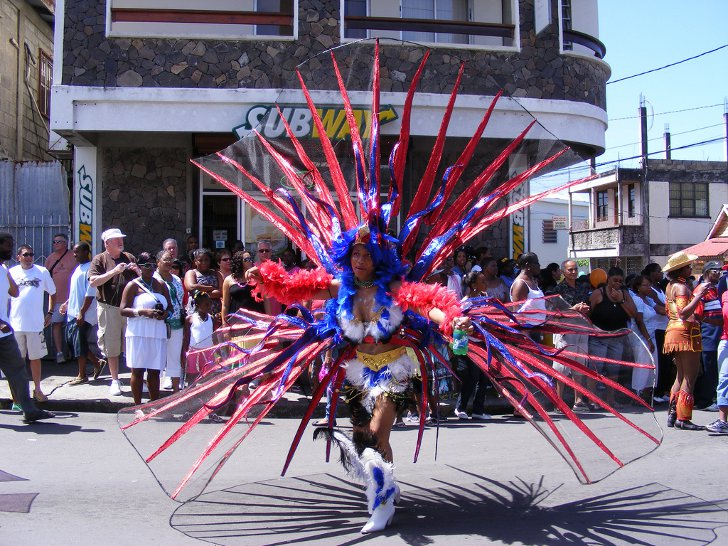The tradition of celebrating Carnival was brought to Dominica by French planters. Since the emancipation of slaves in 1838, Dominica’s Carnival has been strongly influenced by African culture. The Carnival of Dominica is considered the most authentic and least commercialized Carnival in the Caribbean. The main celebration takes place in the capital city of Roseau.
The Carnival season in Dominica begins in January. Pre-Carnival events include musical performances and contests, beauty pageants, and other activities. During the pre-Carnival period the Carnival Queen is elected and crowned.
The Dominica Carnival itself kicks off on Carnival Monday at 4 am with a party called J’ouvert. J’ouvert is a traditional street party that marks the start of almost all Caribbean Carnivals at a crack of dawn (in some creole languages the word “j’ouvert” means “dawn”). The opening party is followed by a masquerade procession.
Carnival Tuesday begins with the official introduction of the Carnival King in Queen followed by the Grand Parade featuring floats, costumed characters and musicians. The most spectacular parade takes place in Roseau, but many villages hold small parades.
The Carnival of Dominica is famous for its music called chanté mas. Chanté mas (masquerade song) usually has satirical lyrics in French creole based on gossip and scandal. Masquerade songs are traditionally sung by women and accompanied by men who play lapo kabwit (goat skin) drums, maracas, cowbells, triangles, horns, conch shells, and other traditional insturments. The chanté mas tradition has declined in popularity due to calypso and steel pan music imported from Trinidad and Tobago and has eventually become a part of bouyon music.
In some parts of Dominica the festivities also involve the burning of King Vaval, an effigy symbolizing the spirit of Carnival. This ritual marks the beginning of Lent.

Photo: Eric Ashby




